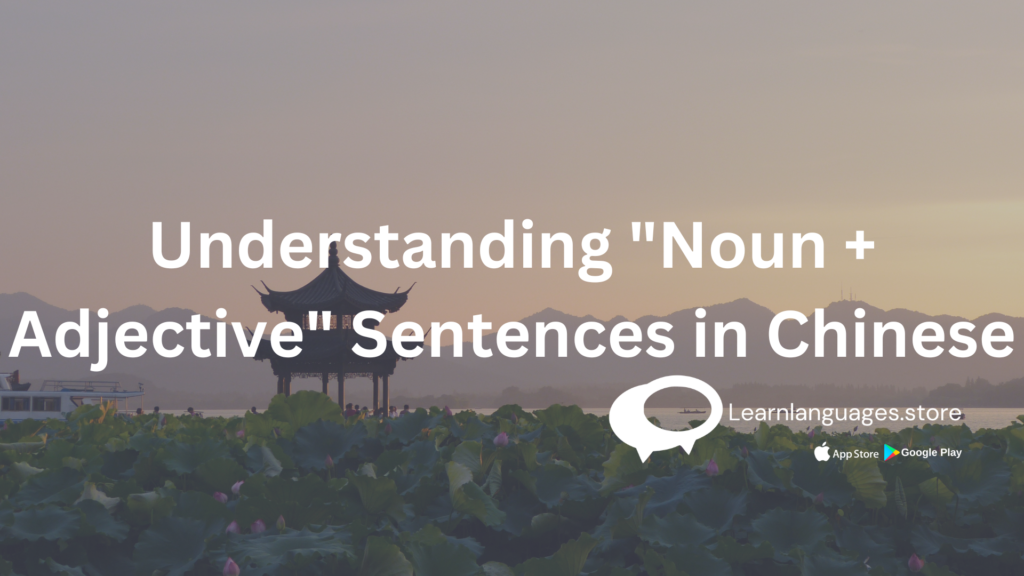Understanding “Noun + Adjective” Sentences in Chinese
Understanding “Noun + Adjective” Sentences in Chinese
Estimated reading time: 2 minutes

Introduction: In Chinese, expressing simple “noun + adjective” sentences involves a unique structure different from English. Understanding this grammar pattern is essential for beginners to effectively describe things and express quality in Mandarin.
Grammar Explanation: In Chinese, nouns are linked to adjectives using the adverb 很 (hěn), not the verb “to be” as in English. The structure follows this pattern: Noun + 很 + Adj.
Examples:
- Pronunciation: Wǒ hěn hǎo.
English Meaning: I’m good.
Hindi Pronouns: मैं अच्छा हूँ। - Pronunciation: Nǐ hěn piàoliang.
English Meaning: You are pretty.
Hindi Pronouns: तुम सुंदर हो। - Pronunciation: Tā hěn gāoxìng.
English Meaning: He is happy.
Hindi Pronouns: वह खुश है।
Exception: It’s essential to note that 很 (hěn) functions solely as a link in these structures and should not be interpreted as “very.” To express “very,” alternative adverbs like 非常 (fēicháng) can be used.
Conclusion: Mastering the “Noun + Adjective” pattern in Chinese enables learners to construct basic sentences to describe things and express quality. Remembering to use 很 (hěn) correctly is crucial for accurate communication.
Learn Languages Store
Vashi,
Email: services@learnlanguages.store










